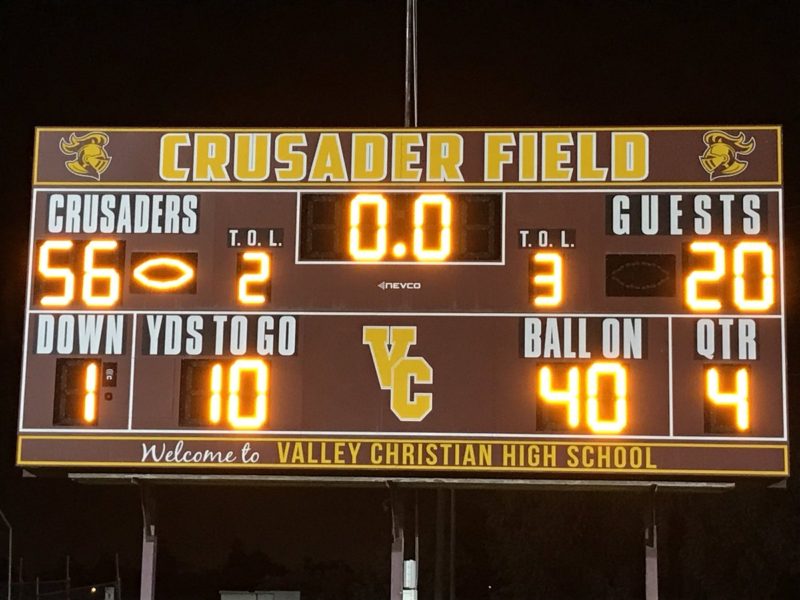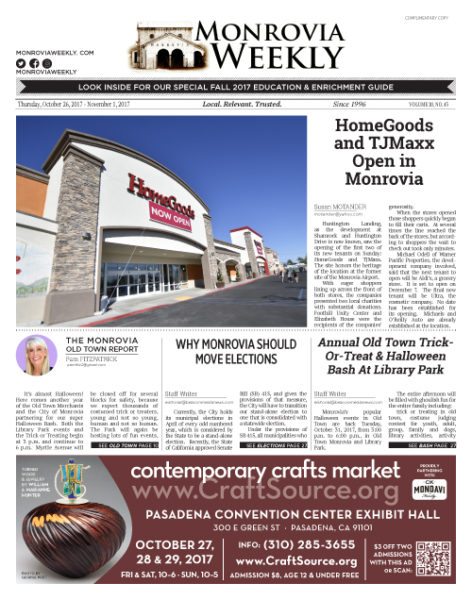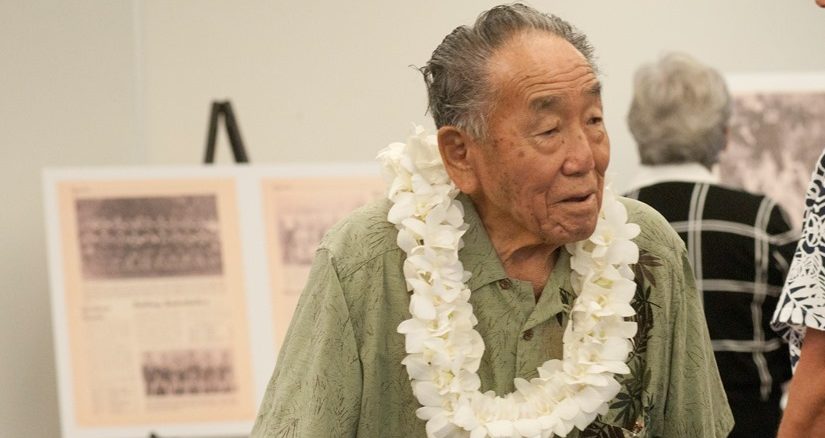
From Riots to Ribbon Cuttings, Singer eloquently evokes Monrovia’s Rebirth in the late 1990s
By Terry Miller
We recently received a copy of a wonderful and enlightening book written by Monrovia’s former Public Information Officer, Richard Singer. The title: Renaissance Years, A History of Modern Monrovia.
Singer starts off with the disconcerting and rarely discussed tale of Mark Allen “because his death and its aftermath — three weeks of fire bombings, a shooting, race-baiting and race riots in November 1971 — was Monrovia’s low point, its nadir. That was the month that shocked the town and drove good people to seek solutions. Things started to change from that point on. It was not only the pivotal point in Monrovia’s modern history, but a dramatic “hook” to bring the reader into the story.”
Singer is no stranger to writing. His career spans decades.
Singer retired from the city in 2010 and subsequently started on this epic undertaking which is a remarkable, candid and unbiased look at the racial tensions that divided the city, not that long ago.
Singer spent more than 25 years in community journalism, most of it at the Daily News in in the early 60s to city editor, contributing editor and finally managing editor. In the mi-80s, he and his wife Jan owned and operated This Week in Whittier, “a glorious but short-lived weekly.” Singer said.
From 1986-1989, he was editor and associate publisher of the twice-weekly Foothill Intercity Newspapers (Monrovia News-Post, Temple City Times, Arcadia Tribune and Duartean) and wrote a weekly column that appeared in those papers and the Pasadena Star-News (their parent company). He left newspapers in 1990 and for the next 10 years served as the executive vice president of the Monrovia Chamber of Commerce. In 2000 he was appointed the City of Monrovia’s public information officer and was a deputy city manager when he retired in 2010. The Singers have lived in Monrovia since 1990.
Singer told Monrovia Weekly that…“the original plan was for a book covering the mid-70s to the late 90s, the years when Monrovia turned itself around from (and I’m quoting my own book here) “…an economic and social disaster, a city plagued by racial violence, fire bombings, crime, drugs, shootings, hangings, empty storefronts and proliferating ‘for sale’ signs, a place where the Nazis and KKK felt they could openly strut their hatred.”
Singer said he realized very early on, though, that he couldn’t talk about the change without first looking at the roots of the problem, and that took the story all the way back to the beginning.
“Similarly, I realized that I couldn’t stop the story at 1995 or 96 because the story itself didn’t stop, the issues and events leapfrogged each other and just kept going. More importantly, though, stopping the story 20 years ago leaves unanswered the questions of what happened to the renaissance beyond that. Did it survive? Is it intact? How are we doing in comparison to the standards it set? So I extended the story to get as close to the present as possible. The last entries to the narrative were made in July of this year,” Singer told Monrovia Weekly.
Singer did preliminary research and an outline in the fall of 2015 and began interviews, focused research and writing of the first section (chapters 1-8) in January 2016.
KGEM host Ralph Walker says “This book is one of the best on MONROVIA ever written… Read the Book. With today’s race relations torn apart, this book is a must read.” He continued: “ After reading this book, I felt something was missing from the first chapter.”
‘I am on probation and they’re going to bust me’ spoken by 13 year-old Mark Edward Allen who would be found hanging in his Monrovia Jail Cell in 1971.
Allen’s final resting place is located at Live Oak Memorial Park. 200 East Duarte Rd. In the Garden of Innocence, the Children’s’ Section Sunrise Gardens, Lot # 3803, Space 8.

Walker, who has been covering Monrovia for more than 25 years as a correspondent for local access television asked several local officials if they’ve read the new book from cover to cover. Apparently the response was something like, ‘why should I?’ Walker’s reply…” Because, you’re in it.”
Monrovia was “…an economic and social disaster, a city plagued by racial violence, fire bombings, crime, drugs, shootings, hangings, empty storefronts and proliferating ‘for sale’ signs, a place where the Nazis and KKK felt they could openly strut their hatred.”
Has anything changed? Does history repeat itself? Walker asks Singer in a recent interview? Referring to recent events with KKK, Neo Nazi’s and a divided country under the Trump administration… “Nothing has changed really, “ Singer said, “but Monrovia has changed.”
300 books were printed in this first, limited edition and it’s being sold now by the Monrovia Historical Society and the Monrovia Historical Museum. It’s available at the museum (open Wednesdays and Sundays) and at The Dollmakers shop in Old Town. Sales so far has been brisk; bout 100 books are in circulation after its first two weeks. Both the Dollmakers and the Historical Society are planning book signings in the near future and the Duarte Historical Society is talking about doing something as well.
The entire $30 sales price of these first 300 books will go to support the museum, the historic Anderson House and the Legacy Project. A second printing is planned for early next year to be available from Amazon.com and other sellers.






